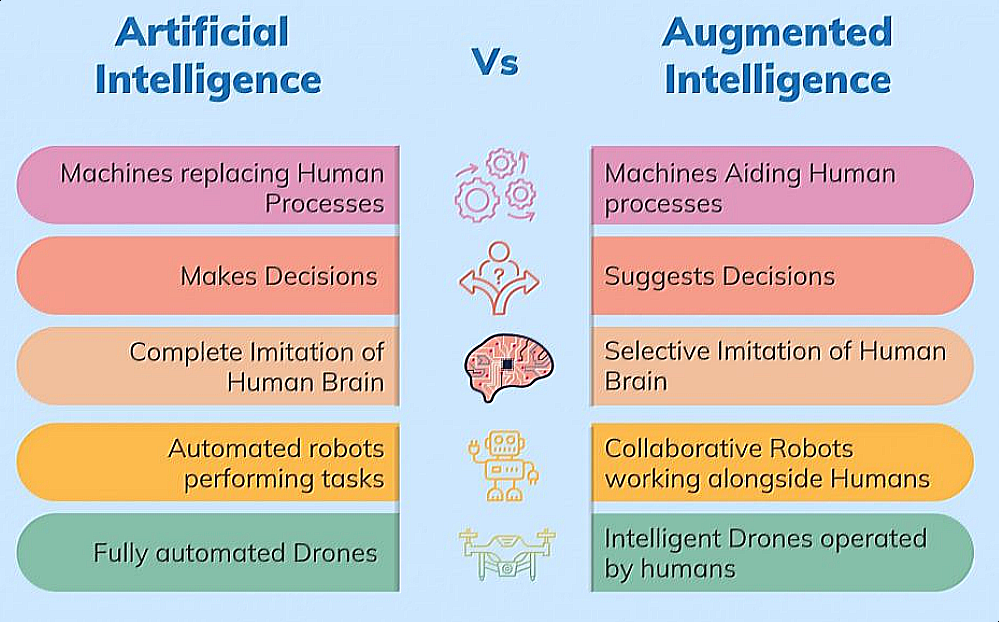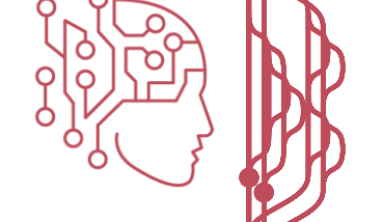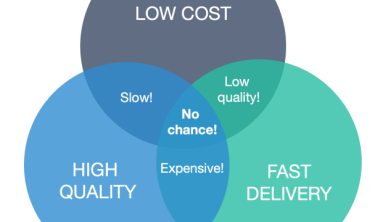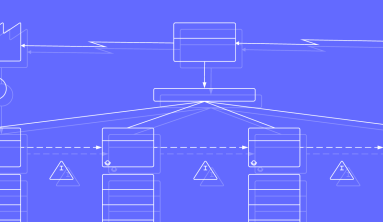A computer would deserve to be called intelligent if it could deceive a human into believing that it was human. – Alan Turing
Gartner has predicted that the business value derived from AI will reach a maximum of $3.9T by 2022. But the report also states that about 20% of the companies will have their employees allocated to monitoring and guiding neural networks. AI investment has undoubtedly become the top priority of businesses. But before getting into the thick of things, let’s have a look at the evolution of AI.
Artificial intelligence and augmented intelligence share the same objective but have differing procedures in accomplishing it. Although both techniques use machine learning capabilities, artificial intelligence takes a full device approach, while augmented intelligence maintains the human aspect.

AI’s Coming Of Age
It’s interesting to note that all the product innovations start from research but even before this phase lies something else – a realm of imagination, ideas in fiction. Back in the 1970s, AI entered our lives through movies. Bots were shown moving with humans. They were doing almost everything any human could do. Well, I don’t know about you but R2-D2 from Star Wars is the earliest memory my brain can recollect.
So, we can see many examples in Hollywood where AI was introduced to us in the form of robots. But do we actually have anything close to these flicks? Close to what Alan Turing said, in the last decade?
Of course, we do; we’re living in a world predicted by him. For instance, have a look at the two profiles shown in the below picture, Lil Miquela, a fictional digital media influencer on Instagram with over 1 million followers and Archillect, an AI-based online curator. Both of them share content and you’ll not be able to identify if it is coming from a human or an AI-fueled bot.
The third example is even more interesting in which Michihito Matsuda, an AI-based machine, ran a successful campaign as a mayoral candidate in the Tokyo elections & received four thousand votes. These were some of the more popular examples. Now let’s look at how AI is being adopted across different leading industries.
We all are familiar that banks and insurance companies use fraud detection systems. To save time and human efforts involved in this process, a number of AI-powered applications are emerging that help with fraud detection. Similarly, you’ll come across examples of the oil & gas industry and health industry making use of AI-powered applications to make the lives of employees easier, keeping the quality of work in check.
In most industries, one of the functions that saw the highest adoption of AI (in the form of chatbots) was customer service. Having said that, it can be tricky introducing AI in your business. The first & foremost question that arises is – what are the different technologies? If you look around, you can find a plethora of sophisticated AI technologies – Virtual Agents that leverage Natural Language Processing, AI-optimized Hardware, Robotic Process Automation, Emotion Recognition Systems, etc. But which one will actually improve your business?
Some of the many AI applications that are popular with support teams nowadays are:
- Virtual agents because they’re available 24/7 and resolve L1 queries in real time improving case deflection, which leads to reduced caseload and improved customer happiness.
- Automatic knowledge creation where the problem of creating help content for your end-users is solved by an AI-powered engine and not by the human workforce that you have.
- NLG (Natural Language Generation) where AI-based engines interpret search analytics reports in natural language for decision makers.
But all this automation, and lowering human involvement in tasks points us toward bigger questions – Is AI good enough to do the magic on its own? Can we leave it on autopilot? What are the chances of it going crazy and wreaking havoc like HAL 9000?
The Need For Augmented Intelligence
A few years ago, Uber was testing AI-powered self-driving cars in California, when one of the vehicles ran through a red light at a San Francisco intersection where pedestrians were present. The infamous Microsoft experiment – Tay, went full Nazi in less than 24 hours on Twitter.
These are just a couple of the many examples that AI can’t be put on autopilot mode, not yet.
If you leave AI on its own, it might not be very successful. There are certain prerequisites for AI to work successfully. You need great technical infrastructure, not to mention big data and a clear business strategy to ensure that AI models are working right. But what you require the most is a continuous monitoring and feedback system in place. That’s the key to a successful AI implementation in your business.
That’s when the concept of augmented intelligence comes into the picture. Essentially, augmented intelligence is a synergy between man and machine. The core idea behind augmented intelligence is that whatever the AI algorithms are doing on their own, there has to be some sort of human intervention that can actually monitor and optimize those algorithms with continuous feedback.
What It Means For Your Enterprise Search
When talking about augmented intelligence specifically in the space of enterprise search, it’s important to step back and think about the difference between an enterprise search engine & a public search engine. All of us are used to a great search experience on various public search engines. Then, why can’t we leverage the same set of algorithms that run behind a public search engine? The answer to that question is – they’re not the same. The signals and parameters are different for enterprise search and web search.
In enterprise search, you have a lot less data (comparatively), more unstructured content, customers’ purchase history, their case history, product usage data, access controls – because not all the users have access to all content repositories – and that’s the reason you need to approach enterprise search algorithms differently. All the more reason you need augmented intelligence!
What exactly will human intelligence add to AI? And how can you train your AI-powered search engine?
With human intervention and supervision, AI will gain decision making capability. AI works, but you need to train it first. Without big data, that can be challenging, but not impossible. There are 6 key practices that need to be followed for your AI-powered apps to work the way you want them to.
Via searchunify blog






